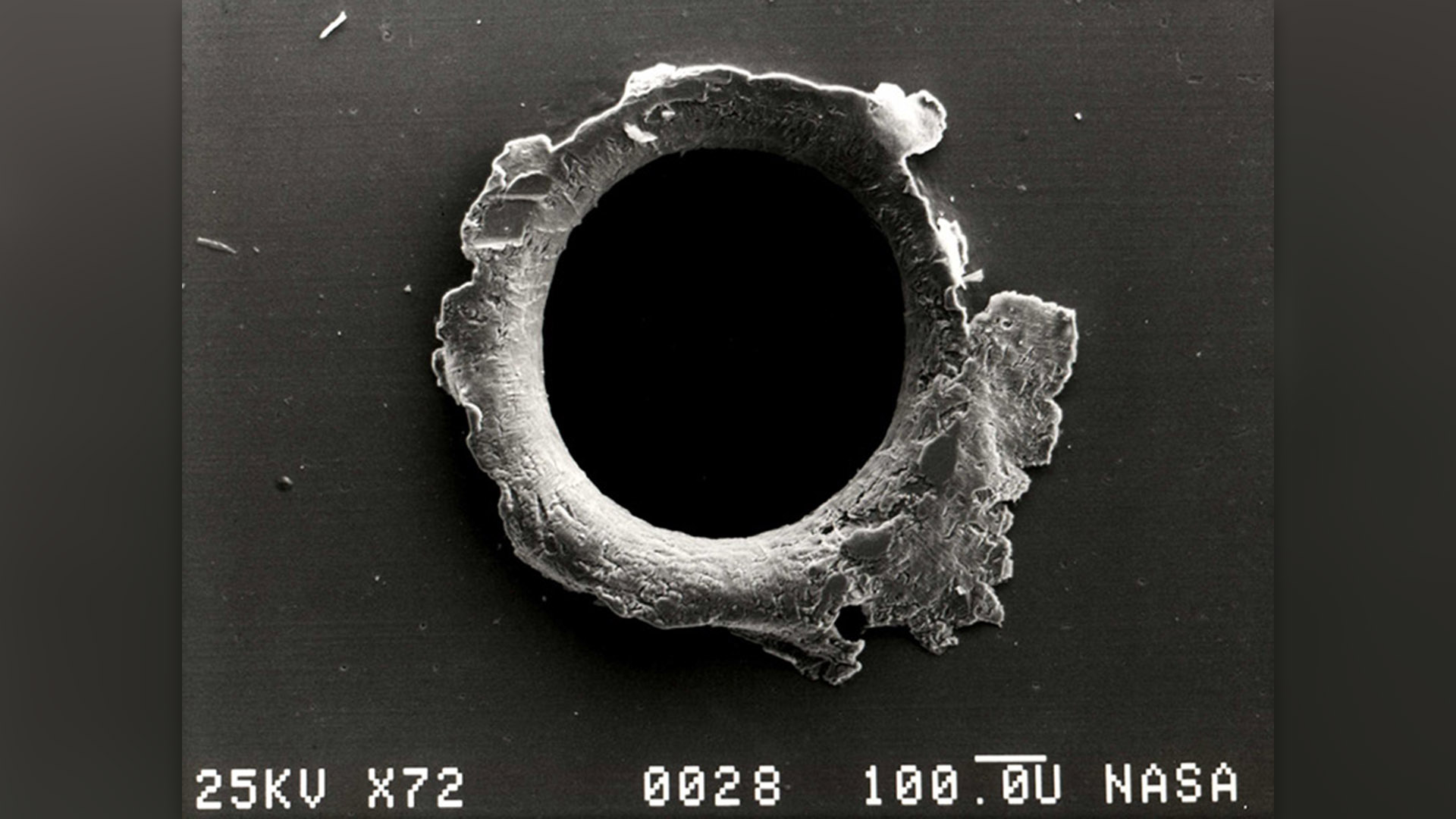'Lightning-like energy bursts' could be used to track the 99% of space junk that can't be seen from Earth
Current methods of tracking space junk in Earth's orbit only follow objects bigger than a softball. A new technique could trace the 99% of junk that's smaller.

Earth's orbit is clogged with all sorts of space junk: defunct satellites, pieces of spacecraft, and even flecks of paint from these human-made technologies.
Now, a new method shows promise for tracking the smallest bits of space litter, down to about the size of a piece of pencil lead — and it relies on "lighting-like energy bursts" that can be detected from the ground when multiple pieces of space junk collide, according to the researchers. The new research was presented Dec. 5 at the Second International Orbital Debris Conference in Sugar Land, Texas.
Even tiny bits of space debris can cause incredible damage. The International Space Station (ISS) dodges a large piece of space litter about once a year, according to NASA. Space agencies currently track orbital debris using ground-based radar, but pieces under 3 millimeters (about 0.12 inch) can't be detected by these methods. That means about 99% of space debris can't be tracked from Earth — leaving the ISS and other functional spacecraft vulnerable to possible collisions.
"Right now, we detect space debris by looking for objects that reflect light or radar signals," Nilton Renno, a professor of climate and space sciences and engineering and aerospace engineering at the University of Michigan who led the new study, said in a statement. "The smaller the objects get, the harder it becomes to get sunlight or radar signals strong enough to detect them from the ground."
Related: Sci-fi inspired tractor beams are real, and could solve a major space junk problem
Renno and Yun Zhang, a postdoctoral researcher at the University of Michigan, harnessed the power of the collisions between tiny pieces of debris to track the tiniest fragments of space junk. According to NASA, the average collision speed between pieces of space debris is 22,370 mph (10 kilometers per second) and can reach 33,554 mph (15 km/s).
Because of this dizzying speed, even collisions between crumbs of debris carry a lot of energy. Upon impact, portions of the debris are vaporized into charged gas, releasing bursts of electromagnetic radiation. These electromagnetic pulses can be detected by 85-foot-diameter (26 meters) ground-based satellite dishes, which are common in arrays around the world, Zhang and Renno reported.
Sign up for the Live Science daily newsletter now
Get the world’s most fascinating discoveries delivered straight to your inbox.
More sensitive antennae, such as those in NASA's Deep Space Network, should be able to detect these orbital collisions as well, according to the researchers. The study was conducted with computer simulations, so more work is needed using real data from Earth orbit.

Earth-bound experiments at the U.S. Naval Research Laboratory and NASA's Ames Research Center can collide materials at orbital speeds and measure the electromagnetic outcomes, and those data could help the research team use these electric pulses to determine what type of debris is being observed, according to study co-leader Mojtaba Akhavan-Tafti, an assistant research scientist in climate and space sciences and engineering at the University of Michigan.
"We want to know if an object is hard or soft because that will impact how it orbits and how damaging it can be," Akhavan-Tafti said in the statement. Knowing this in advance may allow vulnerable spacecraft to divert their course away from the junk, if necessary.

Stephanie Pappas is a contributing writer for Live Science, covering topics ranging from geoscience to archaeology to the human brain and behavior. She was previously a senior writer for Live Science but is now a freelancer based in Denver, Colorado, and regularly contributes to Scientific American and The Monitor, the monthly magazine of the American Psychological Association. Stephanie received a bachelor's degree in psychology from the University of South Carolina and a graduate certificate in science communication from the University of California, Santa Cruz.









